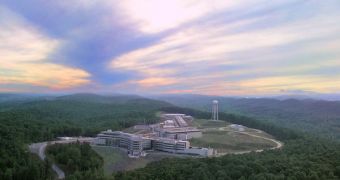The US Department of Energy's (DOE) Spallation Neutron Source (SNS) has been the world's most powerful pulsed neutron-scattering science facility for a long time. Now, its role has been even further consolidated, when it has become the first such research institute to reach and exceed the one-megawatt mark. SNS engineers, from the Oak Ridge National Laboratory (ORNL), pushed the buttons past this critical level on September 18, as the neutron-scattering device prepared to begin its latest rounds of tests, EurekAlert reports.
“The attainment of one megawatt in beam power symbolizes the advancement in analytical resources that are now available to the neutron scattering community through the SNS. This is a great achievement not only for DOE and Oak Ridge National Laboratory, but for the entire community of science,” the SNS project construction leader, Thom Mason, says of the landmark achievement. The expert is also the director of the ORNL. He highlights the fact that, before the SNS was built, spallation neutron sources around the globe only operated in the hundred-kilowatt range.
According to its technical specifications, the SNS is theoretically able to reach as much as 1.4 megawatts in power. However, engineers decided not to push for optimum performances in one go, and take their time in gradually increasing the source's output. The facility has been holding the Guinness record for the most powerful pulsed spallation neutron source on the globe since August 2007, when it achieved the 160-kilowatt landmark. It took a total of more than three years until the SNS's output was increased to more than one megawatt, and its engineers say that the feat will continue to gradually rise until peak performances are achieved.
The SNS and its companion facility, the High Flux Isotope Reactor, are DOE Office of Science user facilities, which means that they are opened to science teams around the world. Each group devises and carries out its own neutron-scattering experiments. The high output that the facility has means that more neutrons can be observed as they slam into their mercury target. In particle physics, the more elements you see, the more detailed results are. Eventually, the SNS will grow to have more than 25 scientific instruments ready for use.

 14 DAY TRIAL //
14 DAY TRIAL //